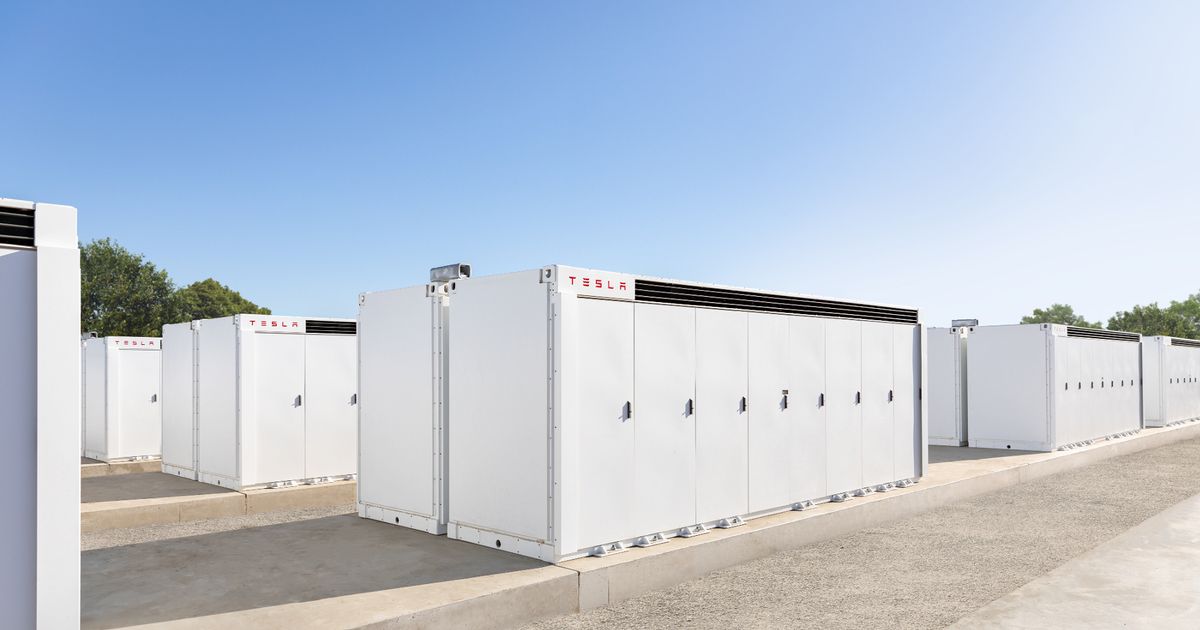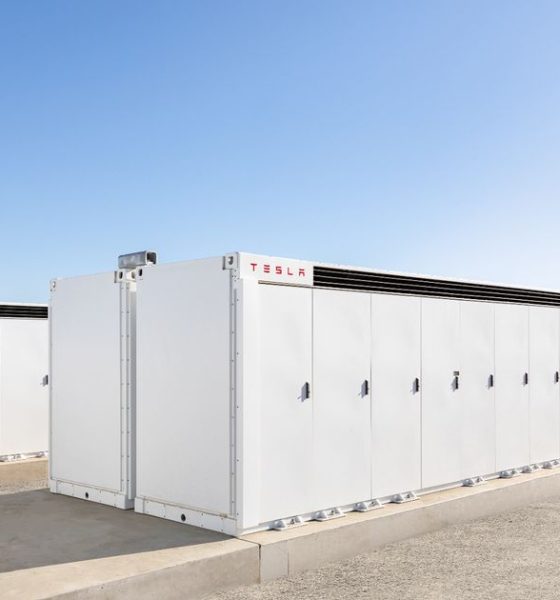Tesla Megapacks are set to back a new energy storage facility in Puerto Rico, after officials from the territory’s government and from the company met last week to sign a contract for the deal.
As detailed in a press release from project partner Genera PR, Tesla has signed a contract for a 430MW/ 1,720MWh Megapack project across six different power plant locations in Puerto Rico. Tesla’s Director of Megapack Americas Brad Harbidge was joined by Genera CEO and President Winnie Irizarry, Governor Jenniffer González Colón, and other officials for a contract signing event last Friday.
“We are addressing the energy crisis by taking action to stabilize the system and ensure a reliable, modern, and accessible electric service for all,” said González Colón. “The signing of the contract for the acquisition of 430 MW in Energy Storage Systems, which does not cost the people as it comes from federal funds, does not increase emissions, is part of the movement toward new energy sources, and can greatly reduce power outages.”
The Megapacks will be deployed to sites at power generation plants in the following locations:
- Cambalache, Arecibo
- Vega Baja
- Palo Seco, Toa Baja
- Yabucoa
- Aguirre, Salinas
- Costa Sur
Initial Megapacks are set to begin arriving in Cambalache in July, while the parties expect the entire distributed system to become operational by the first quarter of 2027.
On Monday, González Colón also shared additional photos from the Friday meeting on X, which you can see below.
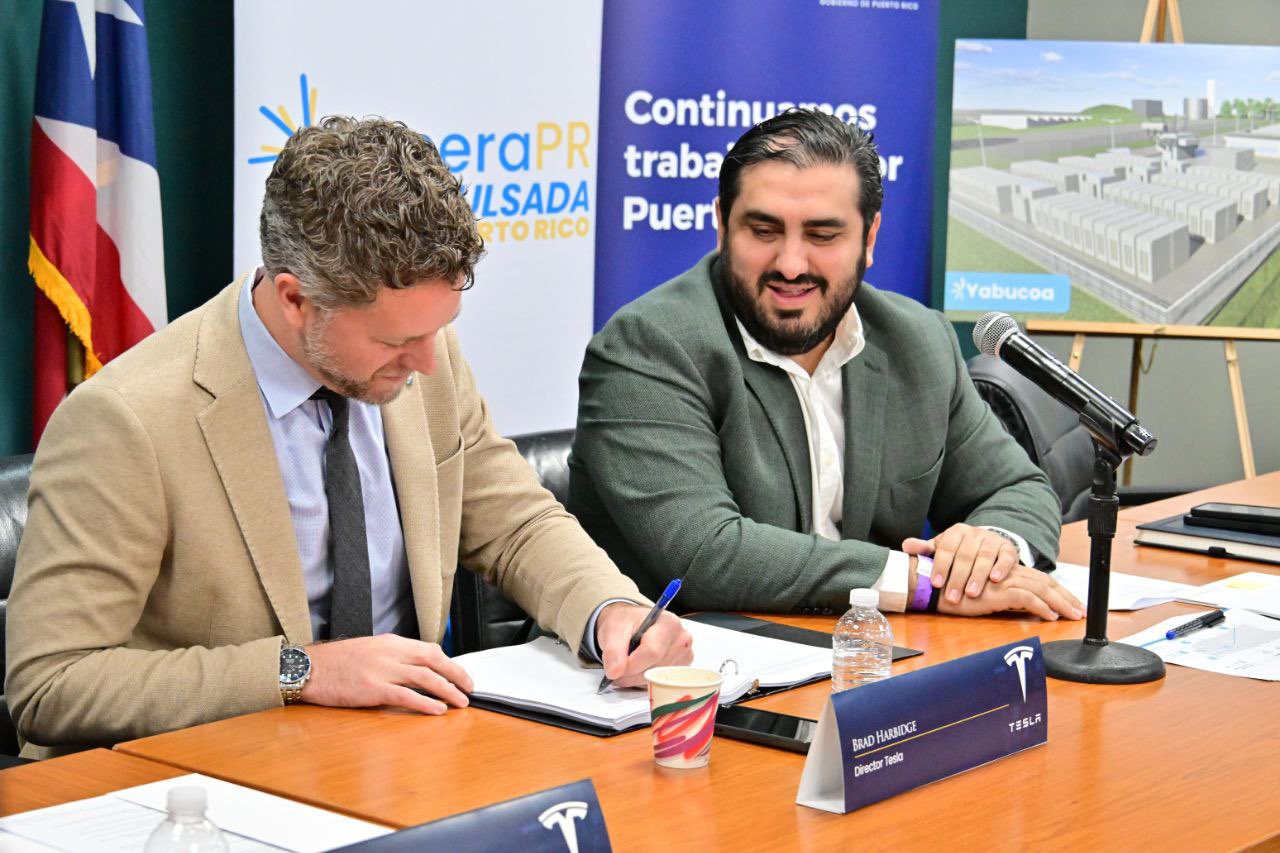
Credit: Jenniffer González | X
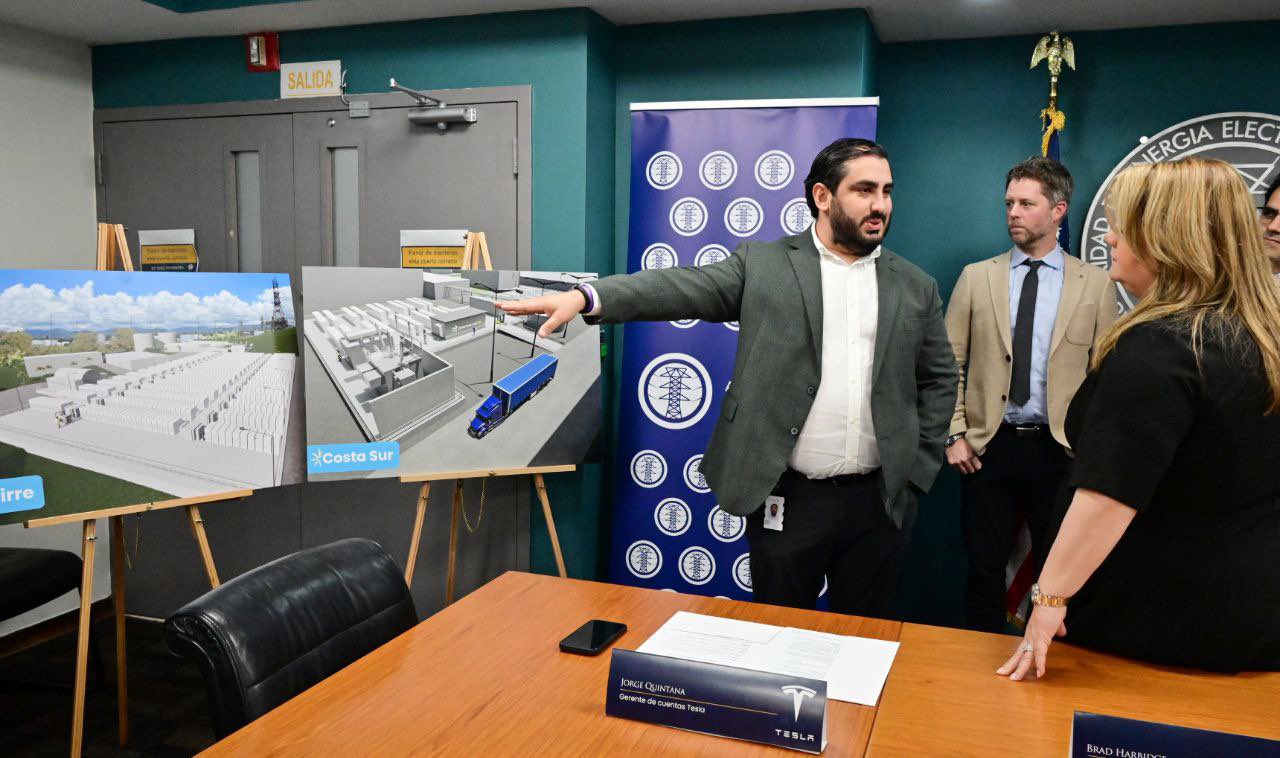
Credit: Jenniffer González | X
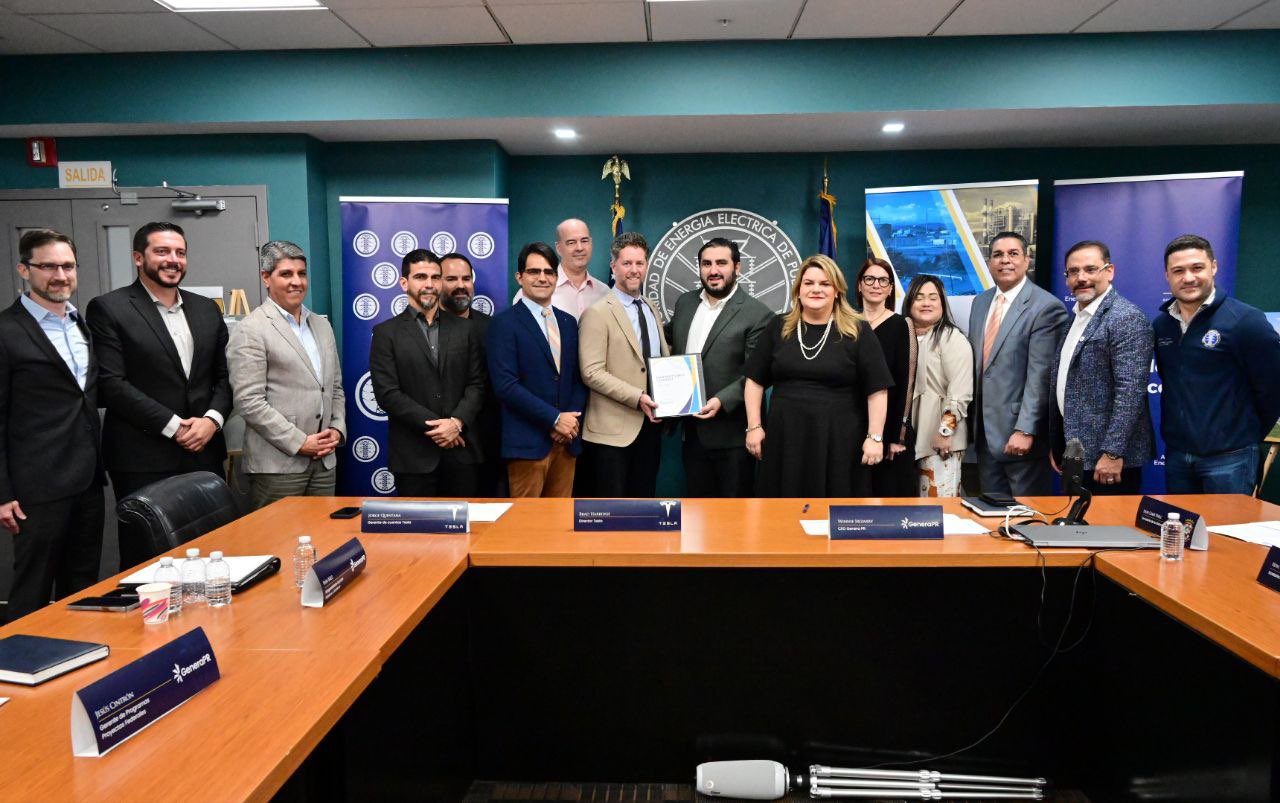
Credit: Jenniffer González | X
READ MORE PUERTO RICO: Tesla launches large-scale Virtual Power Plant (VPP) in Puerto Rico
“The new energy storage systems will allow for the integration of 430 MW of clean, instantly dispatchable energy for up to four hours, resulting in an expected 90-percent reduction in load shedding,” Irizarry said.
Officials selected Tesla’s four-hour Megapacks for the project in October, prior to finalizing the contract at the signing event. The groups have also said that they expect the total investment into the project to reach $767 million, likely including everything from the purchase price of the Megapacks, to construction and labor.
The capacity level for the 430MW project is also considered to be the equivalent of the largest power plant currently operating in Puerto Rico, according to the release.
“The signing of this agreement with Tesla represents a momentous change in Puerto Rico’s energy transformation. This unprecedented investment in our energy infrastructure is a firm step toward a sustainable future,” Irizarry adds.
Tesla also launched its latest-generation Powerwall home battery, the Powerwall 3, in Puerto Rico in December, after beginning to roll the new hardware out to a number of markets throughout last year. While Megapacks are Tesla’s product for grid-scale energy storage, Powerwalls are a suitable size for homes and businesses hoping to keep the lights on during outages through charging from the grid or from renewable sources such as solar.
Using the Powerwall batteries, Tesla has also launched its Virtual Power Plant (VPP) program in Puerto Rico alongside these programs in a handful of U.S. states. The VPP programs effectively create a giant, distributed battery from Powerwall owners across a given region, letting them sell their stored electricity back to the grid during times of peak use or outages.
What are your thoughts? Let me know at zach@teslarati.com, find me on X at @zacharyvisconti, or send us tips at tips@teslarati.com.
Tesla building battery repair facility near Collie Megapack project
Need accessories for your Tesla? Check out the Teslarati Marketplace:

News
Tesla FSD V14.2.1 is earning rave reviews from users in diverse conditions
Tesla’s Full Self-Driving (Supervised) software continues its rapid evolution, with the latest V14.2.1 update drawing widespread praise.

Tesla’s Full Self-Driving (Supervised) software continues its rapid evolution, with the latest V14.2.1 update drawing widespread praise for its smoother performance and smarter decision-making.
Videos and firsthand accounts from Tesla owners highlight V14.2.1 as an update that improves navigation responsiveness, sign recognition, and overall fluidity, among other things. Some drivers have even described it as “more alive than ever,” hinting at the system eventually feeling “sentient,” as Elon Musk has predicted.
FSD V14.2.1 first impressions
Early adopters are buzzing about how V14.2.1 feels less intrusive while staying vigilant. In a post shared on X, Tesla owner @LactoseLunatic described the update as a “huge leap forward,” adding that the system remains “incredibly assertive but still safe.”
Another Tesla driver, Devin Olsenn, who logged ~600 km on V14.2.1, reported no safety disengagements, with the car feeling “more alive than ever.” The Tesla owner noted that his wife now defaults to using FSD V14, as the system is already very smooth and refined.
Adverse weather and regulatory zones are testing grounds where V14.2.1 shines, at least according to testers in snow areas. Tesla watcher Sawyer Merritt shared a video of his first snowy drive on unplowed rural roads in New Hampshire, where FSD did great and erred on the side of caution. As per Merritt, FSD V14.2.1 was “extra cautious” but it performed well overall.
Sign recognition and freeway prowess
Sign recognition also seemed to show improvements with FSD V14.2.1. Longtime FSD tester Chuck Cook highlighted a clip from his upcoming first-impressions video, showcasing improved school zone behavior. “I think it read the signs better,” he observed, though in standard mode, it didn’t fully drop to 15 mph within the short timeframe. This nuance points to V14.2.1’s growing awareness of temporal rules, a step toward fewer false positives in dynamic environments.
FSD V14.2.1 also seems to excel in high-stress highway scenarios. Fellow FSD tester @BLKMDL3 posted a video of FSD V14.2.1 managing a multi-lane freeway closure due to a police chase-related accident. “Perfectly handles all lanes of the freeway merging into one,” the Tesla owner noted in his post on X.
FSD V14.2.1 was released on Thanksgiving, much to the pleasant surprise of Tesla owners. The update’s release notes are almost identical to the system’s previous iteration, save for one line item read, “Camera visibility can lead to increased attention monitoring sensitivity.”
News
Tesla FSD Supervised ride-alongs in Europe begin in Italy, France, and Germany
The program allows the public to hop in as a non-driving observer to witness FSD navigate urban streets firsthand.

Tesla has kicked off passenger ride-alongs for Full Self-Driving (Supervised) in Italy, France and Germany. The program allows the public to hop in as a non-driving observer to witness FSD navigate urban streets firsthand.
The program, detailed on Tesla’s event pages, arrives ahead of a potential early 2026 Dutch regulatory approval that could unlock a potential EU-wide rollout for FSD.
Hands-Off Demos
Tesla’s ride-along invites participants to “ride along in the passenger seat to experience how it handles real-world traffic & the most stressful parts of daily driving, making the roads safer for all,” as per the company’s announcement on X through its official Tesla Europe & Middle East account.
Sign-ups via localized pages offer free slots through December, with Tesla teams piloting vehicles through city streets, roundabouts and highways.
“Be one of the first to experience Full Self-Driving (Supervised) from the passenger seat. Our team will take you along as a passenger and show you how Full Self-Driving (Supervised) works under real-world road conditions,” Tesla wrote. “Discover how it reacts to live traffic and masters the most stressful parts of driving to make the roads safer for you and others. Come join us to learn how we are moving closer to a fully autonomous future.”
Building trust towards an FSD Unsupervised rollout
Tesla’s FSD (Supervised) ride-alongs could be an effective tool to build trust and get regular car buyers and commuters used to the idea of vehicles driving themselves. By seating riders shotgun, Tesla could provide participants with a front row seat to the bleeding edge of consumer-grade driverless systems.
FSD (Supervised) has already been rolled out to several countries, such as the United States, Canada, Australia, New Zealand, and partially in China. So far, FSD (Supervised) has been received positively by drivers, as it really makes driving tasks and long trips significantly easier and more pleasant.
FSD is a key safety feature as well, which became all too evident when a Tesla driving on FSD was hit by what seemed to be a meteorite in Australia. The vehicle moved safely despite the impact, though the same would likely not be true had the car been driven manually.
News
Swedish union rep pissed that Tesla is working around a postal blockade they started
Tesla Sweden is now using dozens of private residences as a way to obtain license plates for its vehicles.

Two years into their postal blockade, Swedish unions are outraged that Tesla is still able to provide its customers’ vehicles with valid plates through various clever workarounds.
Seko chairman Gabriella Lavecchia called it “embarrassing” that the world’s largest EV maker, owned by CEO Elon Musk, refuses to simply roll over and accept the unions’ demands.
Unions shocked Tesla won’t just roll over and surrender
The postal unions’ blockade began in November 2023 when Seko and IF Metall-linked unions stopped all mail to Tesla sites to force a collective agreement. License plates for Tesla vehicles instantly became the perfect pressure point, as noted in a Dagens Arbete report.
Tesla responded by implementing initiatives to work around the blockades. A recent investigation from Arbetet revealed that Tesla Sweden is now using dozens of private residences, including one employee’s parents’ house in Trångsund and a customer-relations staffer’s home in Vårby, as a way to obtain license plates for its vehicles.
Seko chairman Gabriella Lavecchia is not pleased that Tesla Sweden is working around the unions’ efforts yet again. “It is embarrassing that one of the world’s largest car companies, owned by one of the world’s richest people, has sunk this low,” she told the outlet. “Unfortunately, it is completely frivolous that such a large company conducts business in this way.”
Two years on and plates are still being received
The Swedish Transport Agency has confirmed Tesla is still using several different workarounds to overcome the unions’ blockades.
As noted by DA, Tesla Sweden previously used different addresses to receive its license plates. At one point, the electric vehicle maker used addresses for car care shops. Tesla Sweden reportedly used this strategy in Östermalm in Stockholm, as well as in Norrköping and Gothenburg.
Another strategy that Tesla Sweden reportedly implemented involved replacement plates being ordered by private individuals when vehicles change hands from Tesla to car buyers. There have also been cases where the police have reportedly issued temporary plates to Tesla vehicles.
